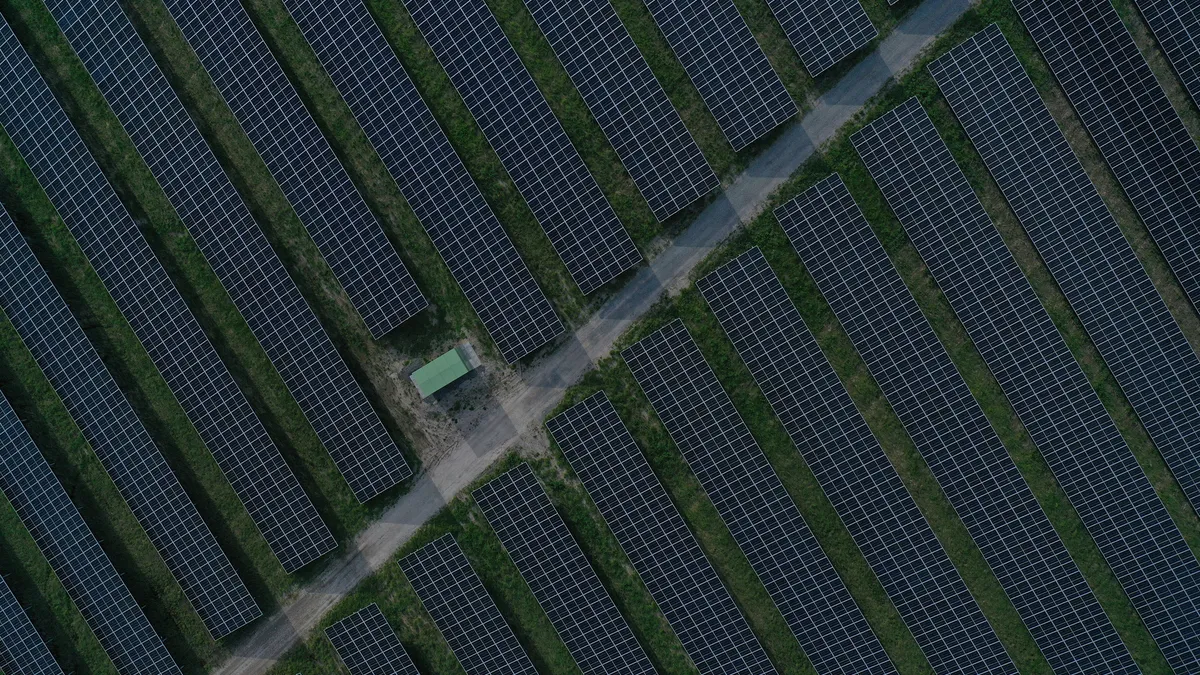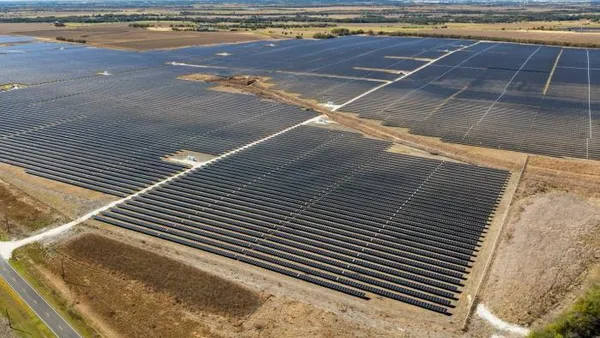Dive Brief:
- Renewable energy capacity worldwide “is expanding faster than at any time in the last three decades,” says a new report from the International Energy Agency, but this growth would need to increase to triple global capacity by 2030, as laid out in the COP28 agreement.
- Global capacity growth is currently only on track to increase by two and a half times by 2030, the report found.
- “It’s not enough yet to reach the COP28 goal of tripling renewables, but we’re moving closer — and governments have the tools needed to close the gap,” said IEA Executive Director Fatih Birol.
Dive Insight:
The IEA projects that global renewable capacity will reach 7,300 GW by 2028, while 11,000 GW would need to be deployed by 2030 to meet the tripling goal. An accelerated case in which the world deploys 8,130 GW by 2028 would put the globe on track to comply with the COP28 agreement, IEA said.
However, the barriers to increasing renewable capacity and the tools to get past those barriers differ between countries. In advanced economies like the United States, these barriers include policy uncertainty, insufficient grid development, and permitting delays, IEA said. In developing economies, access to financing and lack of a robust regulatory framework are bigger issues.
In the U.S., the Inflation Reduction Act has acted as a catalyst for expansion “despite supply chain issues and trade concerns,” said the IEA.
“The IEA’s new report highlights two major themes we know to be true: 1) a record amount of clean energy is being deployed worldwide and 2) while impressive, we can’t rest on our laurels now,” said Ray Long, president and CEO of the American Council on Renewable Energy.
While the IEA forecasts the U.S. adding close to 340 GW of capacity by 2028, “market challenges persist,” Long said. This includes supply chain constraints, restrictions due to trade policy like the Uyghur Forced Labor Prevention Act, labor shortages and insufficient transmission capacity.
“The renewable energy industry, particularly wind, is grappling with macroeconomic challenges affecting its financial health — despite a history of financial resilience,” the IEA said.
The report said economic difficulties in the wind industry have had a particular impact, with wind turbine manufacturers seeing net negative margins for seven quarters in a row in Europe and North America thanks to volatile demand, supply chain disruptions, and higher interest rates.
China was the largest driver of renewable energy capacity growth in 2023, and in particular led the world in installing solar and wind. China is also expected to contribute 56% of global renewables expansion over the next five years.
“Over 2023-2028, China will deploy almost four times more renewable capacity than the European Union and five times more than the United States, which will remain the second- and third-largest growth markets,” IEA projected.
Over the next five years, the IEA projects that wind and solar generation together will surpass hydropower in 2024, then nuclear in 2025 and 2026, respectively. Renewables will surpass coal to become the biggest source of electricity generation in 2025, the agency said, and will account for more than 42% of global generation by 2028.
While current renewables capacity growth is “not yet in line with a tripling by 2030, it is not far off,” said Kaveh Guilanpour, vice president of international strategies at the Center for Climate and Energy Solutions. “What some people were saying was impossible only a few years ago is not only possible — but it is happening. We now just need to make it happen faster. National level policies will be key to that.”
The U.S. is well placed to be a “global leader” in the energy transition, Guilanpour said, and it would be “economic madness” to lose ground to global competitors by not rising to the occasion.














